Sold retail internationally, Xiaomi is one of the best known China brands. They rose to the top in a very short time period due to a huge bank roll and tons of smarts put towards marketing. Indeed, they are the #3 smartphone maker in the world preceded only by Samsung at #1 and Apple at #2.
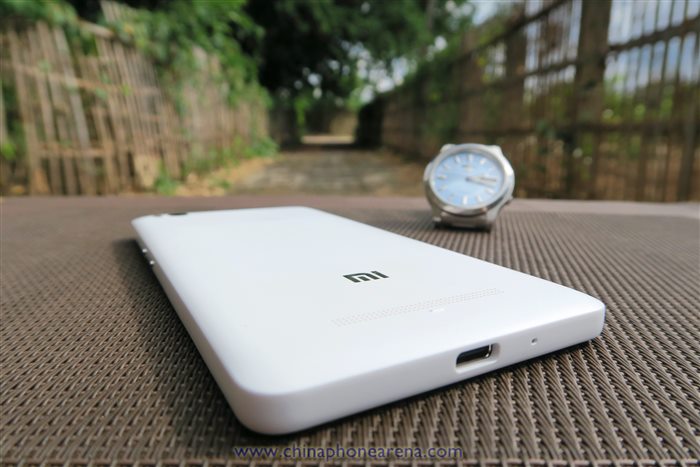
Xiaomi got their start with their MIUI OS. Not satisfied with just being an OS maker, they put their heads towards creating quality mobiles at affordable prices. In this goal, they were famously successful.
On top of their easily themed MIUI and solid well-priced mobiles, they give some very strong support towards the rooting community, with official Xiaomi TWRP, fastboot flashable restore ROMs (eg system.img), and OTA updates / full ROMs that will flash through TWRP. It’s a huge step up from what we generally see with China brands and main brands.
Up for review today is Xiaomi Mi4c.
The Mi4C is Xiaomi’s newest release in the Mi4 series. It carries Qualcomm’s 6-core 64bit CPU SoC, Snapdragon 808, and hovers in the mid-priced range of China mobiles.
Xiaomi Mi4C review style
Formwise, like its predecessors, Xiaomi Mi4C is a 5.0″ display mobile, very square with soft rounds where the back meets the sides and at the corners. The 3000mAh battery is sealed and SIMs are inserted in the side.
It’s a slim mobile, coming in at 8.5mm. Xiaomi has managed to keep the Mi4 series noticeably shorter than other 5.0″ China mobiles, which is a plus.
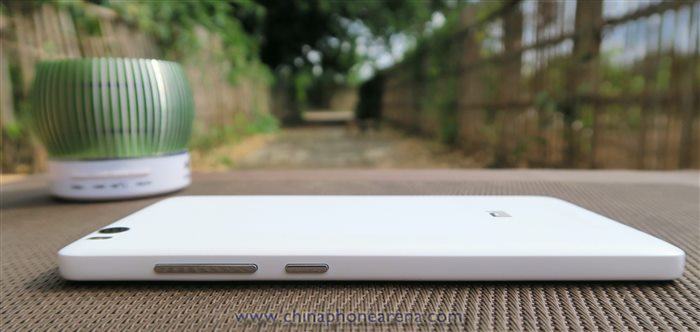
The slim profile combined with its length make it a nice, compact phone, especially when considering the relatively sizable 3000mAh battery its packing.
For those interested, the Mi4C is available in a variety of colors — pink, yellow, blue, white, and black.
Notably, the Mi4C comes with a Type-C USB port. The upside is that you can insert the cable either side up. I do recommend purchasing a couple of cheap adapters that allow you to convert standard USB cables to Type-C so that you’ll be able to use your already owned cables in addition to the Type-C cable that comes with the phone. I’ve used these without any problem, both for flashing and charging they work great.
Interestingly, the Mi4C includes an infrared remote. This can be used to control most any modern appliance in your home that accept remote control, from aircon units to TVs to stereos.
The overall build is solid, with zero creaks in the back piece and the buttons giving firm tactile and audible clicks when pressed.
Xiaomi Mi4C review OS and performance
The Xiaomi Mi4C, as it came to me, carries MIUI 7 built over Android 5.1.1. Google Play Store and several other gapps were already installed as system apps on the device.
As the Xiaomi Mi4C has only been out for a couple of weeks, ROM support is a bit behind where the six month old Mi4i currently sits, but that shouldn’t be a concern for the majority of users; MIUI 7 on Android 5.1.1 is very good and for those who are looking for vanilla CM12.1, we should begin to see a bug free version coming down the pipe soon.
The Snapdragon 808 is an extremely capable SoC with plenty of bandwidth for pushing 1080P. As such, the OS is very smooth, with little to no stutters or animation jitters. Slow scrolling is very smooth. System animations are butter. The Mi4C is deep sleeping appropriately.
The Xiaomi Mi4C Antutu performance shows a wide variance in scores, from a massive 51k down to a still impressive 31k. This lower score is due to throttling. Note though, that when throttled, there is no discernible difference in standard performance, and with 3D scores of 7k even when throttled, demanding 3D games should still run smoothly. When not throttled, the Mi4c scores a huge 15k 1080P 3D.
For those who are curious, the issue is not the Mi4C itself, but the Snapdragon 8xx chipsets. These are hugely powerful SoCs, and when things get hot, they cool down by decreasing power. You’ll never know the difference unless running benchmarks when warm.
10 apps back are bam sitting there ready to rock.
Apps are appropriately staying in memory, even apps opened the previous day and 10 apps back are bam sitting there ready to rock.
The camera on the Mi4C is true 13MP Sony IMX258. In a word– WOW
I’m not a fan of capacitive button lights, and while Xiaomi Mi4C does them tastefully, they thankfully add an option in settings to completely disable them. The LED notification light can also be disabled.
Xiaomi Mi4C ROM Mokee
As with the Mi4i, there is a Mokee ROM available. Though unofficial, it was made by the very solid development team at 4pda. Mokee is CM12.1 Android 5.1.1 based and supports a ton of features, including the ability to mix and match themes, OTA update and much more (note, screenshots are from Mi4i Mokee, but functionality is the same in both Mi4i and Mi4c Mokee)
To install Xiaomi Mi4c Mokee, you will need:
Xiaomi Mi4C storage
The Xiaomi Mi4C comes in two flavors, 2GB/16GB and 3GB/32GB. The storage space for apps and user data is relegated to one 12GB partition.
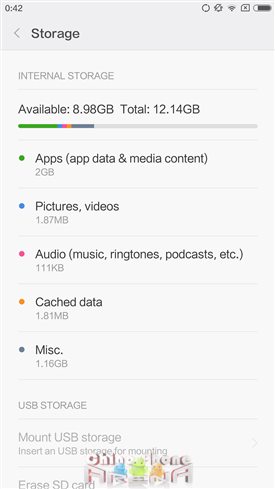
For my uses, the 2GB/16GB model is more than enough, giving enough space to install hundreds of apps and store hundreds of pictures. But, it should be noted that storage can’t be expanded with external TF SD cards, so those wanting to add huge music collections or download lots of large torrents, might consider the 3GB/32GB Mi4C.
Xiaomi Mi4C display
The Xiaomi Mi4C display is IPS OGS 5.0″@1080P. Its great looking at a retina 400ppi. Brightness is beyond what’s required to view in daylight at 345 lux, and goes all the way down to zero lux (undetectable by the meter) at its lowest brightness setting, when indoors, in low light, with auto-brightness set.
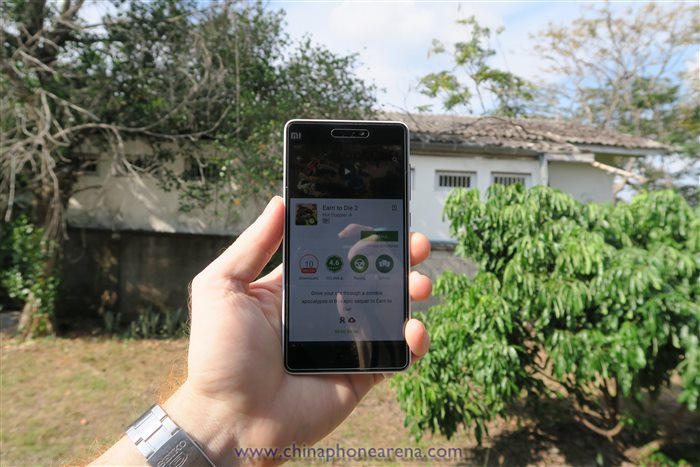
Auto-brightness is working appropriately, with the system adjusting brightness according to detected light levels. If you haven’t purchased a phone recently, one of the nice features of Lollipop and MIUI KitKat is that they allow you to set separate levels for when auto-brightness is on and when off.
There’s zero light bleed in the corners and when viewing from extreme angles, color and contrast remain true. Colors are rich, and whites are strong and pure.
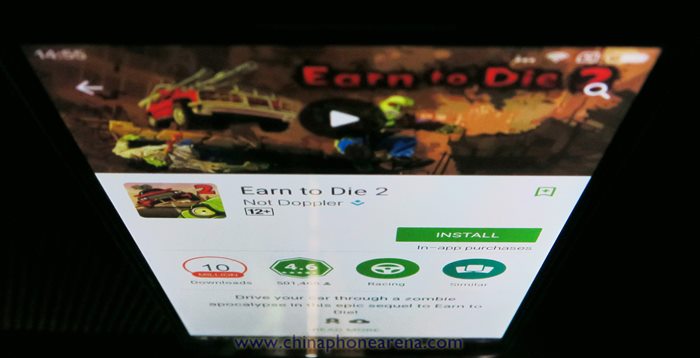
It doesn’t get much better than this, even when compared to $800 main brand flagships from Samsung and iPhones.
Xiaomi Mi4C camera picture samples
The camera on the Mi4C is true 13MP Sony IMX258. In a word– WOW. This sensor produces very sharp, clean images with very good color and solid dynamic range. It is a noticeable step up from IMX214.
In good light, the images it takes will generally not be discernible from those taken with common standalone compacts, perhaps even better than some compacts, and should be good enough for medium and even large prints (eg, 8×10, 11×14).
[flickr_set id=”72157658366355024″]
All pictures here were taken with Google Camera. See the 100% crops. Very sharp and no discernible noise. The IMX258 has some very nice dynamic range as well. Take a look at the shadowy leaf wall and its crop. This shadowy area shows sharp and clean, while still not blowing out the bright sky and clouds in the background.
Compare Mi4C / Sony IMX258 to other phones at Flickr
Very impressed by the IMX258 and hope to see $150-250 range mobiles begin to use this sensor regularly.
Xiaomi Mi4C battery life test and charging
The Xiaomi Mi4c battery charges in 2.5-3 hours to a solid 4.35V.
Mi4c threw us a suprise, scoring 6 hours 45 minutes screen-on time
In the battery life test, I had expected under six hours, but the Mi4C threw us a suprise, scoring 6 hours 45 minutes screen-on time running 720P video over WiFi Youtube@140 lux brightness. This is a small step up from the Mi4i’s score of 6 hours 20 minutes.
Xiaomi Mi4c components
- frequency support:
- 2G: GSM 850/900/1800/1900MHz
- 3G: WCDMA 850/900/1900/2100MHz
- 4G: FDD-LTE 1800/2600MHz
- Infrared remote: confirmed working
- WiFi: outstanding, maintaining a fast, strong connection to a $20 home router beyond 150ft / 45m
- GPS: very good, achieving a cold lock within seconds and always maintaining mid-high 30’s on several satellites at once
- external speaker: the speaker is very good, putting out beyond adequate loudness with crisp definition
- mic:tested and working appropriately
- earpiece:tested and working appropriately
- compass:tested and working appropriately
- gyroscope:tested and working appropriately (really enjoying the gyroscope panoramas)
- OTG:tested and working appropriately
| Conclusion Summary | ||||||||
|---|---|---|---|---|---|---|---|---|
|
|
|||||||
As with the Mi4i, I really like the Mi4C. The Mi4C is extremely snappy, has a great display, outstanding WiFi signal strength, very good GPS, a strong external speaker, a great camera, and all components working appropriately.
On top of the physical aspects of the phone, the OS is very stable and bug free. I experienced no force closes, and all apps that I tested worked appropriately. The Xiaomi Mi4C is a new mobile, but I think given the Snapdragon 808 SoC, we should see a lot of ROMs coming to us soon for this phone. Mokee CM12.1 is already available, and this fact alone makes the Mi4C a heavy contender.
Note there are two different versions of Mi4C– 2GB/16GB and 3GB/32GB. For the typical user, the Xiaomi sits pricewise a bit above other China mobiles, but with this extra cost comes piece of mind that you’re getting a very powerful, solid mobile from a tried and true handset maker.
In addition there are many accessories available and excellent future ROM support. I could easily recommend the Xiaomi Mi4C to a close friend or family member.





































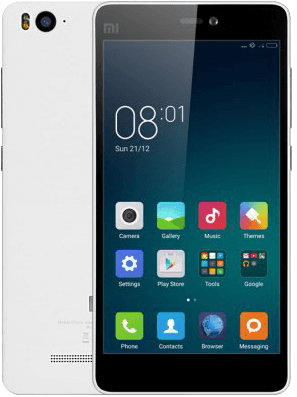
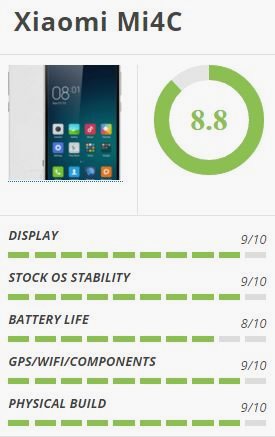
Leave a Reply